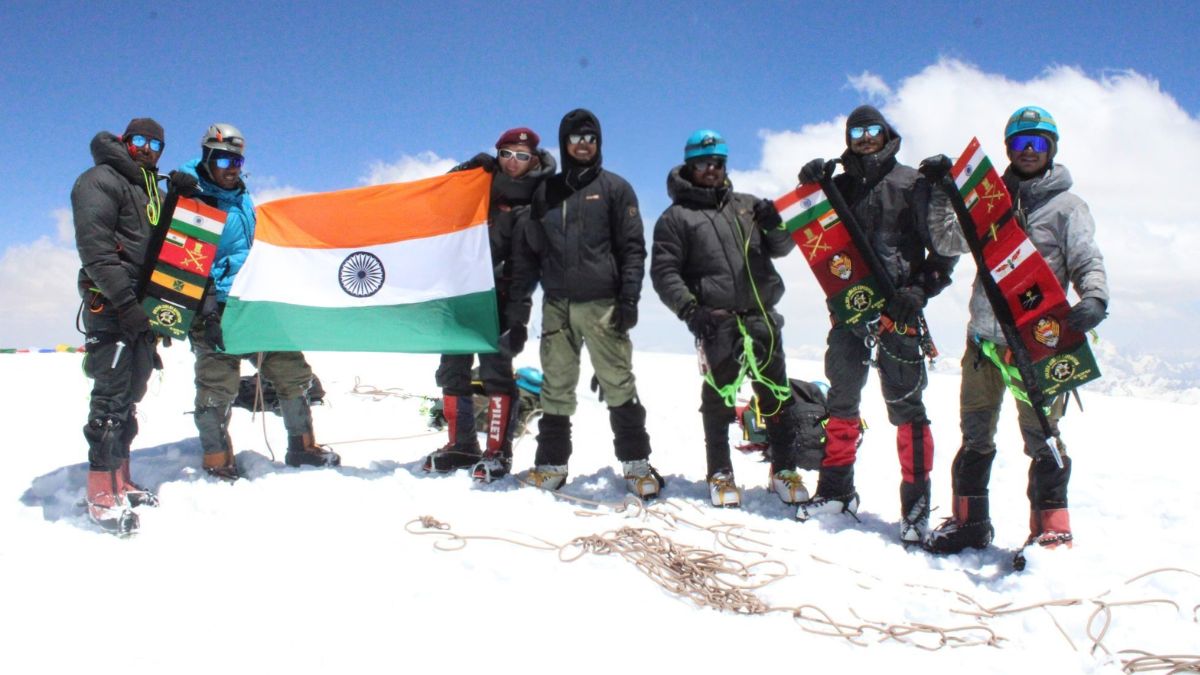The Indian Army successfully completed mountaineering expedition to Mount Shahi Kangri and Mount Silver Peak in Ladakh’s Karakoram Range. The expedition— a tribute to soldiers who made the supreme sacrifice in Galwan Valley clashes— also aimed to promote border tourism in the Union Territory of Ladakh and showcase its potential for high-altitude adventure.
Flagged off on May 28, 2025, by Lieutenant General Hitesh Bhalla, General Officer Commanding of the Fire and Fury Corps, the mission culminated on June 18. The climb combined military tribute with extreme adventure, reinforcing the Army’s operational preparedness and emotional connection with the terrain.
Why did the Indian Army undertake this mountaineering expedition?
The expedition served a dual purpose:
- Tribute to Galwan fallen soldier: The mission was dedicated to the memory of Ladakhi soldiers who sacrificed their lives during the 2020 Galwan Valley conflict with Chinese troops. According to a defence spokesperson, the objective was to “honour the valour” of these brave soldiers in a region closely tied to their legacy.
- Boosting border tourism: By scaling Shahi Kangri and Silver Peak, the Army also aimed to showcase Ladakh’s potential for adventure and border tourism, encouraging civilian engagement with the remote highlands and highlighting their strategic and ecological significance.
Where are Shahi Kangri and Silver Peak, and how difficult was the expedition?
Both peaks lie in the Karakoram Range, southwest of the Depsang Plains— a high-altitude, contested region with year-round snow and extreme climate conditions.
The team of 28 skilled personnel, trained in both ice and rock craft, undertook a shorter but more hazardous route from the southeast.
The high-altitude terrain posed severe weather and physiological challenges, demanding exceptional preparation and teamwork.
What happened during the Galwan clashes?
The Galwan clashes between Indian and Chinese troops took place on the night of June 15, 2020, in the Galwan Valley, located in the border region of Ladakh. This was the deadliest conflict between the two countries in over four decades.
Tensions had been escalating for weeks along the Line of Actual Control (LAC), the de facto border between India and China, due to competing territorial claims and infrastructure development. Despite talks between local commanders on June 6, 2020, to de-escalate, both sides maintained a heavy troop presence in the area.
On June 15, 2020, Indian troops, led by Colonel Santosh Babu, went to verify the removal of a Chinese encampment as part of a disengagement agreement. However, a violent melee broke out at Patrolling Point 14. The fighting, which lasted up to six hours and occurred in near-total darkness, involved hand-to-hand combat using stones, iron rods, clubs wrapped in barbed wire, and other improvised weapons.
India confirmed the deaths of 20 soldiers, including Colonel Babu, with some dying from injuries and hypothermia after falling into the fast-flowing Galwan River or off steep ridges. China only acknowledged four fatalities among its troops, though the number of Chinese casualties was higher.
